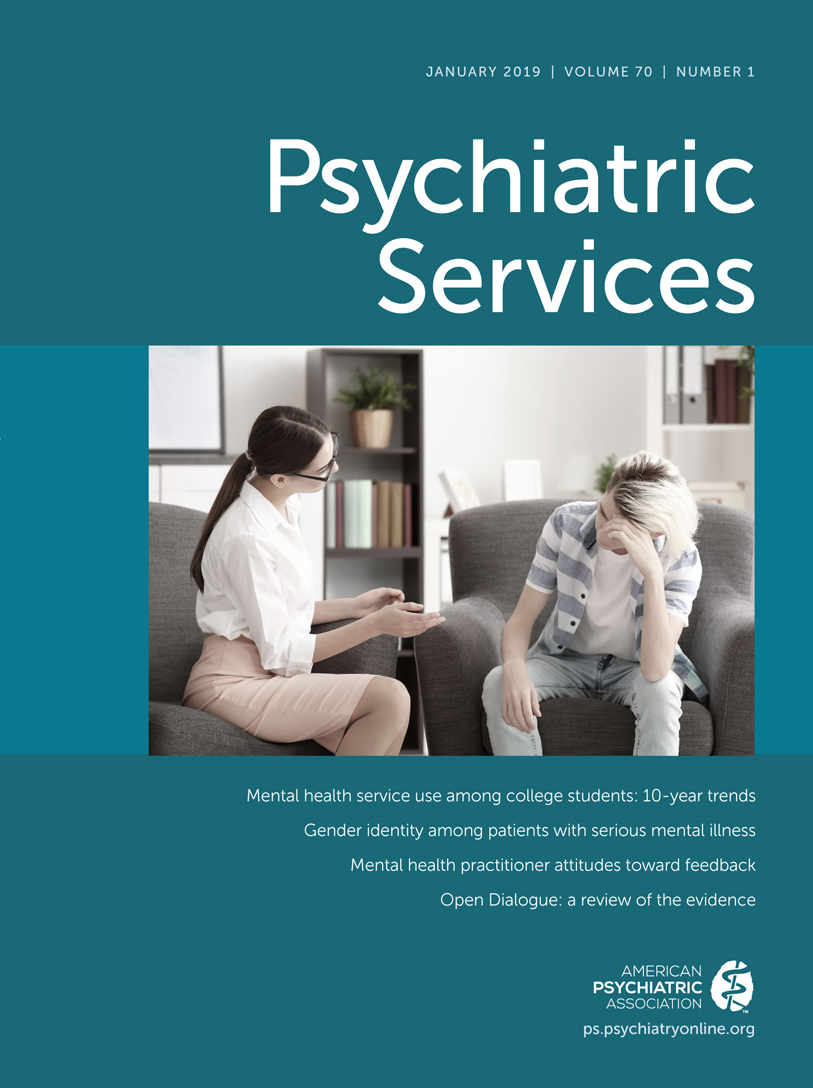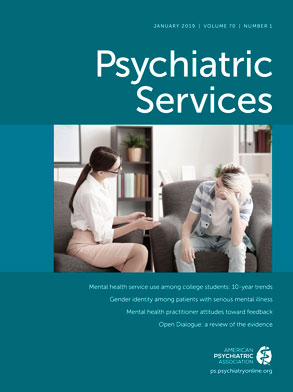Understanding Why Patients May Not Report Suicidal Ideation at a Health Care Visit Prior to a Suicide Attempt: A Qualitative Study
Abstract
Objective:
Methods:
Results:
Conclusions:
HIGHLIGHTS
Methods
Participants and Setting
Data Collection
Data Analysis
Results
Participant Characteristics
| Characteristic | N | % |
|---|---|---|
| Female | 15 | 58 |
| Age category | ||
| 18–30 | 8 | 31 |
| 30–49 | 11 | 42 |
| 51–65 | 7 | 27 |
| Hispanic | 2 | 8 |
| Race | ||
| White | 20 | 77 |
| Black | 3 | 12 |
| Asian | 2 | 8 |
| Other | 1 | 4 |
Reasons for Not Reporting Suicide Ideation
What Health Systems Can Do
| Theme | Example 1 | Example 2 |
|---|---|---|
| Engage patients in their treatment plan for mental health conditions | “[Provide] more knowledge about my own issues with anxiety and depression. Like the severity of my problems that I had. . . . I don’t know, maybe if someone goes in, like, because I didn’t—I had never been to counseling or anything like that. I just went to my doctor’s office and said that I was experiencing severe weight loss and things like that. Make counseling more mandatory than it is so that, or figure out a better action plan other than—I was just put on medication without really realizing how severe things could really get and how out of hand things could really get.” | “One time I felt depressed in seventh grade, and I went to a therapist and she kind of like made it seem like it was nothing. And she [attributed symptoms] to PMS. That wasn't what it was at all.” |
| Ensure racial-ethnic diversity among mental health providers | “Talking to people that are people of color or people who understand that, that would help a lot because I feel more open to them if they can relate on a similar ethnic or racial level. . . . There are good counselors there but talking to someone who would be similar to my ethnicity or culture or race would be a lot easier to talk about, ‘Yeah, this happened. I’m experiencing this.’ It would be just easier. It would take that guard down.” | |
| Provide proactive outreach to patients based on their history | “I guess in the last year and a half, my suicide attempts have been pretty frequent. I mean, I had a spurt of them a year ago and then I was okay for a year and then I had another spurt of them a year later. So maybe, ‘Does this person have a history of suicide attempts?’ And for me, that would be yes. You know, in the last year and a half, it’s been pretty frequent. So, I don’t know of anybody really that’s like, ‘Okay, this person has made several suicide attempts. You know, maybe we need to be—they’re sending weird emails and they have a history of suicide attempts; maybe we need to have the psychiatric nurse call immediately or something like that than wait a day or so.’ That would have been something, do a check, ‘Does this person—how has this person been doing in that regard?’ yeah, pretty often.” | |
| Understand what hospitalization means to a patient (i.e., expense and loss of autonomy) | “Just that I think when somebody is feeling suicidal, it’s really important to not make them feel like they are trapped. That’s kind of the worst. Like, they take you to the hospital and make you feel like you’re in jail. I think it should be a little more—it’s like, you already feel like crap. So, you shouldn’t feel like you’re being punished. So, that’s kind of what it feels like.” | “I hate going to the hospital so if they got somewhere else that’s more affordable and stuff. Because that’s expensive. When they would involuntarily hold me, I have to take an ambulance. I can’t take myself to the hospital. I have to ride in the ambulance. The ambulance is really expensive. I’m still paying off medical bills for that.” |
| Improve transition from inpatient to outpatient setting | “The thing about it is, is that for a person to get that type of negative experience after they came out of a coma, or just after a suicide attempt, they wake up, and now—I mean, really . . . I was really unstable, and that could have ended my life right there because obviously—I’m already—you know what I mean? And then I wake up out of a coma, and they lost my wallet, all my ID, all everything . . . and I’m really more concerned about somebody else who might go through the same type of scenario, and they can’t handle it because I could barely handle it. I was so disappointed or I was just like—it really bothered me bad. It really bothered me bad. And like I say, a person who might have extreme depression, that right then, they would have just gave up and said, ‘Well, see. This is why. This is why.’” | “Follow-up is so important because I have been waiting. And now, I’m just in limbo and I’m kind of trying to remember what I learned in there [hospital], things like that. That’s something that needs to be addressed is we need to have follow-up care immediately. Because you go from a hospital, then you go home. You’re on your own. Nobody’s there. So you’ve gone from a hospital where you have everybody, you have counseling, to where you have no family, no counseling.” |
Discussion
Conclusions
Acknowledgments
Supplementary Material
- View/Download
- 57.18 KB
References
Information & Authors
Information
Published In
History
Keywords
Authors
Competing Interests
Funding Information
Metrics & Citations
Metrics
Citations
Export Citations
If you have the appropriate software installed, you can download article citation data to the citation manager of your choice. Simply select your manager software from the list below and click Download.
For more information or tips please see 'Downloading to a citation manager' in the Help menu.
View Options
View options
PDF/EPUB
View PDF/EPUBLogin options
Already a subscriber? Access your subscription through your login credentials or your institution for full access to this article.
Personal login Institutional Login Open Athens loginNot a subscriber?
PsychiatryOnline subscription options offer access to the DSM-5-TR® library, books, journals, CME, and patient resources. This all-in-one virtual library provides psychiatrists and mental health professionals with key resources for diagnosis, treatment, research, and professional development.
Need more help? PsychiatryOnline Customer Service may be reached by emailing [email protected] or by calling 800-368-5777 (in the U.S.) or 703-907-7322 (outside the U.S.).

